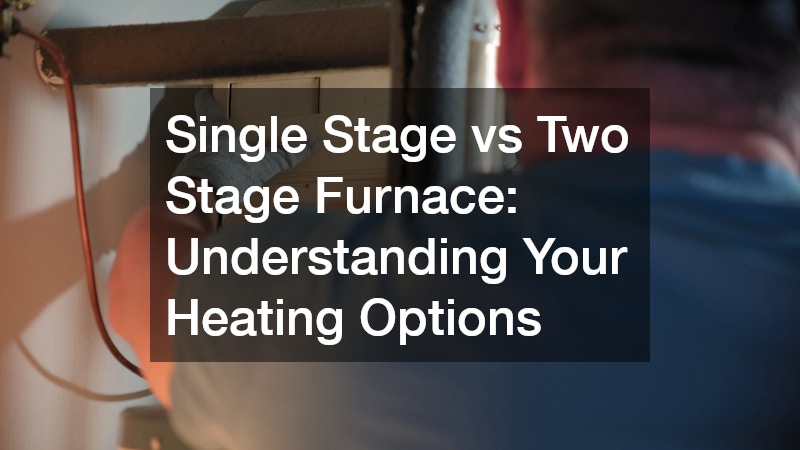When it comes to choosing the right heating system for your home, understanding the difference between single stage and two stage furnaces can make all the difference. Each type of furnace offers unique benefits, performance levels, and comfort capabilities, making it essential to know which option aligns with your household’s needs. Whether you’re considering an upgrade or planning new furnace installations, knowing how these systems work can help you make an informed decision.
Understanding Single Stage Furnaces
Single stage furnaces operate with a simple, all-or-nothing approach. When the thermostat signals the need for heat, the furnace runs at full capacity until the desired temperature is reached.
This straightforward design makes single stage furnaces reliable and easy to maintain.
One of the main advantages of a single stage furnace is consistency in heating output. Homes with smaller square footage or moderate climate conditions often benefit from this system because it delivers heat uniformly and efficiently. Since the furnace only has one level of operation, the system cycles on and off, which can result in slight temperature fluctuations in larger homes or areas with high ceilings.
For homeowners who value simplicity and dependable performance, single stage furnaces are a practical choice. They require fewer components than multi-stage systems, which often translates to lower maintenance demands. Despite its basic operation, a well-maintained single stage furnace can provide long-term reliability, making it a trusted option for many households.
Exploring Two Stage Furnaces
Two stage furnaces, on the other hand, offer a more advanced approach to heating. Unlike single stage systems, these furnaces have two levels of operation: high and low. The low setting is used for maintaining comfortable temperatures during milder weather, while the high setting kicks in during colder conditions. This allows for a more gradual and consistent heating process throughout the home.
The main benefit of a two stage furnace is improved comfort. By running at a lower capacity for longer periods, the system can maintain even temperatures without the noticeable swings often associated with single stage models. This feature is particularly beneficial in larger homes or spaces with varying insulation levels, where maintaining a uniform temperature can be challenging.
Additionally, two stage furnaces are generally quieter during operation. Because they spend more time running at lower levels, the system avoids the abrupt bursts of full-capacity operation, which can be noisy and disruptive. For homeowners seeking a quiet and steady heating experience, a two stage furnace provides a noticeable upgrade in comfort and performance.
Choosing the Right Furnace for Your Home
Selecting between a single stage and a two stage furnace depends largely on your home’s specific heating needs and your comfort preferences. Single stage furnaces are ideal for smaller homes or areas with moderate climates, where the simplicity and reliability of the system are sufficient to maintain comfort. Two stage furnaces, however, are better suited for larger spaces or homes in colder regions, where gradual and consistent heating can make a significant difference.
Another consideration is the compatibility of the furnace with your existing heating infrastructure and home design. Two stage furnaces often integrate seamlessly with modern thermostats and zoned heating systems, allowing for precise control over temperature in different areas of the house. Single stage furnaces, while simpler, may not offer the same level of adaptability for advanced heating setups.
When planning furnace installations, it’s important to carefully assess your household’s unique needs to ensure the system you choose provides both comfort and efficiency. Start by evaluating the size of your home, as larger spaces may require a furnace with higher capacity or multiple stages to maintain even temperatures throughout. Insulation quality is another critical factor—well-insulated homes retain heat more effectively, which can influence the type of furnace that will operate most efficiently. Personal comfort preferences also play a role; some homeowners prefer consistent, gentle warmth, while others are comfortable with a furnace that heats more quickly but cycles on and off frequently.
In conclusion, both single stage and two stage furnaces have distinct advantages, and the right choice depends on your specific heating requirements. Single stage furnaces provide reliable, straightforward heating with fewer components, making them ideal for smaller or moderately insulated homes. Two stage furnaces offer enhanced comfort, quieter operation, and more consistent temperatures, making them a preferred option for larger homes or colder climates. By understanding the differences between these systems, you can make an informed decision that ensures a warm and comfortable home environment year-round.



